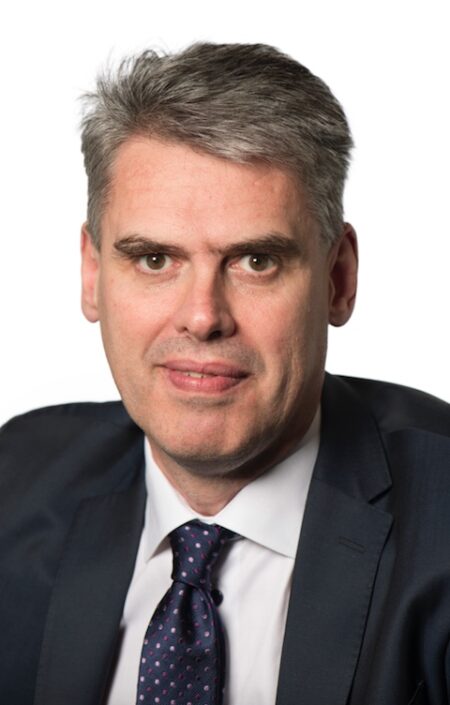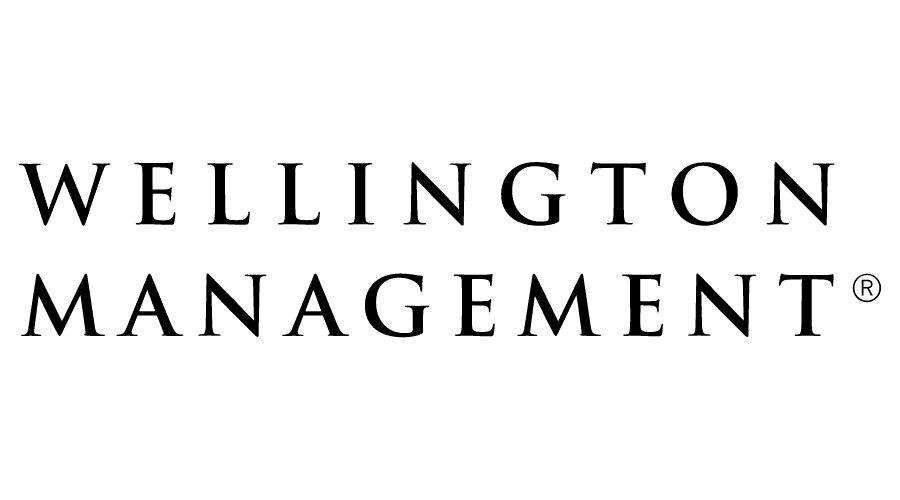The NordicInvestor 2022 ESG Report aims to highlight just how subjective and complicated ESG investing is, to give investors some perspectives that are very different from the over-simplified headlines and marketing slogans that often seem to have a strong influence on the discussion.
We have identified many differences of opinion within and between countries, and there are plenty of unanswered questions for reasons including data gaps, technical approaches to climate modelling, ESG policies still evolving, and regulations not yet being finalized.
European regulations are ambitious and worthwhile and will not only fail to address all questions, but also create considerable complexity in some areas. We hope to turn this into an annual publication and we expect to broaden and deepen our dialogue with the industry over the coming years.
Acknowledgments
“We are proud to present our first Nordic ESG Report, which compiles answers from investors across the Nordics. The responses we have received provide valuable insight into the nuances and complexities Nordic investors face when shaping their ESG strategies and we would like to thank all the investors that have participated. We would also like to thank the team at Wellington Management who have provided us with support for this project.”
– Jonas Wäingelin, Editor in Chief, NordicInvestor
“Integrating ESG into investment decisions is an ever-changing challenge facing investors. We’re pleased to have partnered with NordicInvestor on their ESG Report because understanding how you, as investors, approach ESG — from the risks to the opportunities — can help to find the right solutions to meet your needs. We very much appreciate the responses to the survey and hope that you find the results useful.”
– Dennis Kwist, Head of Nordics, Wellington Management
NordicInvestor has interviewed leading pension funds, insurance companies, banks, asset managers, investment consultants and others in the region to assess how their ESG policies and priorities are developing, and hear their views on the evolving EU sustainable finance framework.Together these investors manage assets over 1 trillion euro.

We could see a green tidal wave in markets if investors, companies and regulators live up to their commitments,
A list of those participating with attribution appears below (some other companies that also participated anonymously feed into our general conclusions, but we have not quoted them).
All of the firms we interviewed have some exclusions, pursue active ownership and invest in companies with climate transition strategies. Some of them also pursue best in class ESG benchmarking or ESG rating of companies; thematic and impact strategies and a few use ESG benchmarks. These six broad approaches have some degree of overlap, since exclusions may inform the choice of benchmark, and active ownership, thematic and impact strategies are designed to encourage carbon transition. Some allocators divide assets into each category while others view them more holistically. Benchmarks apart, all allocators are using these approaches to a greater or lesser extent, but they differ in terms of emphasis.
For external managers, exclusions may be the only hard requirement. The approach is then to assess the manager’s overall ESG philosophy, policies and processes, which will need to meet some minimum criteria, but do not necessarily have to be exactly the same as the allocator’s own ESG policies. Active ownership at one level involves the allocator engaging with the external manager, and at the next level nearly always relies on the external manager to engage with and proxy vote on investments.
1. Climate and carbon targets
Climate is everyone’s top priority, but ambitions and targets for carbon neutrality do vary. Asset owners have been faster than asset managers to adopt climate alignment and carbon targets and are driving the market forward.

The most proactive institutional clients are setting them, usually based on some globally recognized framework. The most common reporting standards and initiatives to engage in are TCFD, PRI, Transition Pathway Initiative and UN Net Zero Alliance
Some asset managers have set targets, which are typically something like 50% below 2019 levels by 2030 and net zero by 2050, though a few managers are aiming at net zero earlier. For instance. Swedbank Robur has set a target of net zero by 2040 and a 50% reduction by 2030, relative to the baseline year of 2019.
Most asset owners have just set a big picture target across all portfolios, but some of them have different targets for certain asset classes or equity markets.

Veritas has a target for portfolios to be carbon neutral by 2035 and by 2030 for real estate
Targets could also be earlier for local companies in the Nordic region, where governments are aiming for net zero sooner than 2050 eg by 2035 in Finland. Another Finnish manager, OP targets net zero by 2050, and a 50% reduction by 2030 compared with a 2019. Though Finland has a national target of 2035, which does filter through to Finnish companies that OP invests in, OP invests globally so cannot expect to align with the 2035 target everywhere.
We have not noticed anyone setting a later target to align with certain countries’ longer term targets, such as China’s 2060 or India’s 2070 net zero target dates.
Carbon trading and offsets
It may not be easy for asset managers and companies to meet net zero targets based only on their own activities. There is potential for both companies, and asset managers, to trade carbon credits and invest in offsetting activities, within funds or at the management company level. These could complement other decarbonization drives but will not replace them.

We would like to see a market-based system of trading carbon credits developing further so that financial institutions can participate
However, offsetting, or buying credits, to hit headline targets are viewed as controversial by others

In our view, offsetting is contentious. We do not accept buying carbon credits as a way to achieve net zero targets. Companies need to actually decarbonize, through methods such as natural capture or carbon or activities with negative emissions. For our internal activities, we do carry out active forest planting but describe this as “compensating” rather than “offsetting” emissions
How useful are net zero targets?
The fact that using credits or offsets could distract attention from actually reducing companies’ own carbon footprint is one concern, and there are other issues that some investors do not feel comfortable with.
There is some debate over the credibility of asset managers’ carbon targets, since unless they offer only a very narrow range of strategies, they cannot predict which funds their clients will choose to invest in.
“DNB Asset Management has so far not set any explicit target for the carbon footprint of all its portfolios and funds, because unlike an asset owner, it does not have complete control over where the assets are invested. If clients chose to invest in traditional index funds, it might be difficult to dramatically reduce the carbon footprint,” – Janicke Scheele, Head of Responsible Investments at DNB Asset Management
Some managers are deliberately avoiding setting net zero for practical reasons. For instance, while committed to climate-smart investing and encouraging portfolio companies to develop net-zero targets and strategies, Fondsfinans doesn’t currently emphasise net zero targets for its portfolios’ carbon emissions, for several reasons.
“Net-zero for several industries depends on future technology that is not yet commercial. We would rather focus on what is credible today and evaluate and engage on management commitment and strategies, than tick boxes for emissions targets. Decarbonisation targets need to be tailored to sectors and regions and real-world impact matters more. It is easy to reduce a portfolio carbon footprint on paper by adjusting exposures based on calculations of current emissions, but more important to have impact by reducing it on the ground in the real economy,” – Melanie Brooks, Portfolio Manager and Head of ESG at Fondsfinans Kapitalforvaltning
2. Climate transition approaches
Arguably, carbon footprints are at best static snapshots and at worst backward looking. Excluding the heaviest emitters could even be seen as a cosmetic exercise that does not contribute to positive change. It is also too binary to split companies into brown or green when the majority of the investment universe may not easily fit into either category.

Dark green companies may already be crowded trades and investing in only these companies does not change anything in the real world. We would rather invest in companies changing from light green to dark green or even from brown to green
The strongest advocates of transition may even argue that exclusion is unhelpful because investors who divest they lose the chance to drive positive change. Moreover, it is the “brown” and “light green” sectors that need to reduce carbon footprints, which may involve adapting their business models and requires capital. Starving them of capital and/or raising their costs of capital might make it more difficult for them to transition to a lower carbon model, which is a process that entails some risks and uncertainties around future and unproven technologies and new business models.
The emphasis on transition is one reason why some investors have less extensive exclusion lists, or higher thresholds for fossil fuels to allow for transition, such as utilities using some coal moving over to natural gas and renewables. Energy is probably the most controversial sector.

Are energy companies un-investible? Are some of them part of the solution in terms of transition, engagement and setting science-based targets? And should investors choose the best in class energy companies versus the benchmark? We see most polarization around this issue
Neste Oil is one example of a controversial stock.

Finland’s Neste Oil has the one of the largest carbon footprints in the Helsinki equity market but is also making a huge contribution to energy transition through its sustainable biofuel and aviation fuel
EAB owns Neste, which is excluded by some other investors, such as Handelsbanken in Sweden.

We want to see a positive trend of development. The easiest approach is to divest but this does not lead to any quick or real impact. We would rather focus on where we can help companies to take the necessary transition, and see real positive change in a structured way.
Transition ambitions also explains why nearly all investors we interviewed want to invest in SFDR article 6, 8 and 9 products for fear that restricting themselves to article 8 or 9 might reduce potential for transition; the current version of the EU environmental taxonomy is also seen as too narrow to accommodate some transition activities or strategies
Climate transition approaches may focus most attention on the biggest carbon footprints and tailor targets to sectors.
“A forward-looking approach is important because even some of the heaviest emitters, such as cement or oil and gas companies, may have credible transition plans. We could look at their capital spending plans to assess how their future production mix could follow particular emissions trajectories. While KLP support the 1,5 degree trajectory, it is not always possible to find industry sector emission pathways for this global warming target. Where it is not, we apply to emission trajectory with the highest ambition. For instance for oil and gas a 2 degree trajectory is used” – Lars Erik Mangset,Chief Advisor, Climate Change for KLP
This can even imply owning some firms that are currently worst in class on some rating systems
“Evli is currently invested mainly in companies with an MSCI A rating but managers can invest in CCC rated companies if they are confident about future plans such as carbon transition,” – Outi Helenius, Head of Sustainability at Evli
Climate risk measures
A forward-looking approach also involves forward-looking climate risk measures, such as Climate Value at Risk, though these are complicated and subjective.
“We are working on forward looking climate measures, including climate Value at Risk (VaR), using a PACTA model. It sounds so easy to estimate such a number but it takes a lot of effort and requires a lot of assumptions, so we need to be careful when using it” – Eric Ranberg, CIO, Gjensidige
“there are uncertainties about how to measure physical and transition climate risks used to calculate VaR” – Lars Erik Mangset is the Chief Advisor, Climate Change for KLP

We think that Climate VAR is quite challenging to measure, with many assumptions, and much granularity around different physical risks and also technology opportunities,
3. Environment beyond climate: water, waste, circularity, biodiversity

Our priorities are in developing our climate change approach according to our climate strategy roadmap including considering the risks and possibilities arising from biodiversity loss and not just transition,
Some allocators are currently prioritizing only climate within the environmental space, perhaps because it is easier to quantify and report on. The climate focus could also be driven by regulation, anticipating the first stage of the EU Environmental Taxonomy, covering climate adaptation and mitigation, that came into force in January 2022. Other allocators have added areas such as water, waste, the circular economy, and biodiversity, which might be preparing for the next stage of EU Environmental Taxonomy, that will probably start from January 2023.

We are also looking at water and waste issues, which are relevant to urbanisation
These environmental factors are of course related to climate:
“There is a link between climate and biodiversity, which also focuses on land use, deforestation, pesticides, organic food, and increasing meat consumption” – Markus Lindqvist, Head of ESG at Aktia Asset Management
These non-climate objectives might need more qualitative analysis and cannot always be easily summed up into a quantitative metric such as carbon footprints or targets. Context can also be important: for instance, water usage is of more acute concern in countries that have a shortage of water. Biodiversity might be most difficult to measure, since scientists estimate 8.7 million species of plants and animals exist. Nonetheless, there are some structured frameworks for analysing them.

We are part of a larger working group, the TNFD, similar to TCFD but focused on nature”. The focus is on companies’ dependency on nature and of course impact on nature. One example is crop pollination and water purification, which are worth more than 1.5 times global GDP according to the OECD
There is also hard data on forests and deforestation.
“In 2020 we issued a report with Storebrand and the rainforest alliance, looking especially at data on deforestation,” – Lars Erik Mangset, Chief Advisor, Climate Change for KLP
Adding dimensions to the environmental prism can change perceptions of some activities, since possible costs need to be balanced against benefits.
“For instance, onshore wind was seen as very sustainable some years ago, but these investments are now challenged due to its environmental impact on wildlife such as birds. We have no exposure to onshore wind in Norway” – Jan Erik Saugestad, CEO of Storebrand Asset Management.
Another asset manager in Norway also views wind power through several lenses. A glamourous and obvious green sector such as wind turbines still requires bottom up ESG analysis

There are issues around sourcing, supply chains, and dealing with discarded blades. It is oversimplifying to talk about solutions. We want to avoid binary buckets of brown versus green and ESG versus non-ESG,
The portfolio optimisation process could become more complicated as it includes a wider variety of environmental criteria.
4. Social aims: human rights, worker rights, diversity, inclusion and equality; consumer rights and data protection
Diversity including gender equality are most often mentioned, though human rights and worker rights can also be emphasized. Human rights and worker rights violations can lead to exclusions, whereas we have not yet noticed a lack of workforce diversity being a reason to avoid investing in a company. On the impact side, social bonds are much smaller than green bonds but are a growing asset class.
Social ESG has its own range of sub-strategies:
“In social, we are trying to develop relevant strategies, which could be empowerment and social inclusion and also investments in social infrastructure,” – Jan Erik Saugestad, CEO of Storebrand Asset Management
Social ESG also shapes dialogue with companies and asset managers:
“Most engagement is focused on environmental issues, but we also look at equality, diversity and gender equality measures both within fund management companies and at the companies they invest in. For us, equality covers both social and governance,”– Tobias Tallberg, Deputy Head of Multi-Manager Solutions, Handelsbanken Fonder
And social analysis varies between countries.
“In the Nordic region, companies’ social performance in terms of board, management and employee diversity is often more advanced than in other countries, as are human capital investments, so the focus may shift to topics such as consumer rights and protection and data security. In resource extraction globally, issues around human rights, labour rights and forced labour can be relevant not only for miners but also other firms that use resources in their supply chain. For instance, I have recently been discussing with companies in my portfolio to ascertain if their supply chain includes a region that is associated with forced labour and what they’re doing to ensure sustainable supply chains more broadly,” – Melanie Brooks, Portfolio Manager and Head of ESG at Fondsfinans Kapitalforvaltning
5. Governance: independence, diversity and probity
Some allocators feel it is artificial to separate E, S and G objectives and want to look at ESG as a whole. For instance, diversity and gender equality on the board of directors is one example of an objective that could cover S and G.
Paying attention to governance alone was important decades before ESG became a widely used term. Governance at corporate level will cover board independence and diversity though the absence of these is rarely a reason for exclusion. Governance more broadly will often cover corruption, at both corporate and country levels, which is a reason for exclusions, at least until settlements are reached to resolve matters. For external asset managers, the company’s own governance would be assessed and disclosure might need to be improved;

Depending on future reporting requirements, we might need more transparency from our external funds in the future, probably agreed on through side letters,
6. Active Ownership
Good corporate governance at investee companies- and asset managers – is not only an ESG metric, but also provides the foundation for active ownership to drive forward positive change with regards to E, S and G.
Active ownership addresses negatives and positives
Historically, engagement has addressed mainly “negative” corporate activity, conduct or behavior. In future engagement is being expanded to become a force for positive change.

A new development on the engagement front is positive engagement with companies that are not violating the UN Global Compact
Popular engagement topics
Engagement covers both traditional and more topical E, S and G issues.
“DNB has engaged with companies on a range of issues including: climate change and greenhouse gases; other environmental matters such as oceans and biodiversity; human rights; other social issues; board structure and independence, remuneration and governance issues including tax and corruption. Our expectations documents forms the basis for these discussions,” – Janicke Scheele, Head of Responsible Investments at DNB Asset Management
“There is also more proactive engagement around climate, human rights, biodiversity, emerging market supply chains, oceans, water, and sustainable food systems. Research focus areas have included emerging market supply chain risks for technology; data security, and privacy,” – Janicke Scheele, Head of Responsible Investments at DNB Asset Management
Active ownership can be direct and independent or indirect and collaborative, and some consultants have a preference for the former:
”Engagement can include collaborating with firms such as Sustainalytics, which will voice concerns without attributing them to specific investors. We do not think engagement should take place anonymously: fund managers should talk to the CEO in the same way in which quarterly performance is reviewed,” – Lingyi Lu, Head of Sustainability at Söderberg and Partners AB, Sweden.
Nordic and global engagement
Every asset owner or asset manager we interviewed engages directly in at least their home country, and sometimes also throughout the Nordics. Outside the Nordic region, it is more common to see indirect, collaborative engagement, via proxy voting advisors such as ISS, ESG ratings agencies such as Sustainalytics, or climate groups such as Climate Action 100 Plus.
Direct Engagement with Companies
A handful of the Nordic asset owners we spoke to are engaging directly on a global scale however;

We have recently spearheaded engagement with Toyota, on lobbying. This campaign has criticized the CEO of Toyota for questioning the Japanese Government’s plan to ban new ICE vehicles by 2035. This feels like David against Goliath in the Bible, though we did also get support from other investors, including some Climate Action 100 investors
Three other Nordic investors – Storebrand Asset Management, Nordea Asset Management and KLP – who we spoke to have also engaged with Toyota on this matter,
Primary markets and private debt
Active ownership may have most power in primary markets, according to some asset owners.
“The prime time to influence companies is when they are raising capital. We find more opportunities for new issues in credit than in equity. We also have some influence over infrastructure issues and sustainability linked bonds,” – Lars-Göran Orrevall, Chief Investment Officer at Skandia Life
Private bilateral debt naturally enables bespoke deals. A bilateral loan could have sustainability terms specific to the issuer, and have financial incentives to reward on good ESG performance in the form of interest expense that reduces if targets are met.
“A real advantage of being active credit investors originating our own deals and agreeing terms with borrowers, is that they can be related to support sustainability linked outcomes. For instance, lending can incentivize a data storage business to make a full transition towards green electricity sources. This could involve margin ratchets in response to hitting ESG performance targets. We would only propose this if it supports the core business of the borrower. When the results are communicated to equity investors it could also increase the company’s value” – Marjo Koivisto, Investment Associate and Head of ESG at Proventus Capital Partners
Proxy Voting in house and through advisors
Some asset managers mainly or wholly outsource proxy voting, but Alecta votes every single AGM item for all companies it owns;

“We do have an advisor for foreign holdings, but we still make the voting decisions on each and every resolution….
This hands-on approach is more practical for a group that holds around 100 companies than for asset managers investing in thousands of firms.
Engagement can extend beyond companies, to include external asset managers, governments, and non-governmental organisations (NGOs).
Proactive engagement with external managers could include demanding climate policies or changing products to fit into existing ESG values;

We are a fairly big distributor so managers do listen
External managers seem to be responsible for voting proxies, sometimes with guidelines from the asset owner. Some asset managers now allow asset owners or allocators to vote proxies, but we have not yet found any doing so.
7. Thematic, impact and green strategies
Some asset managers expect huge growth in thematic flows: currently, DNB assets in thematic strategies are around 7-8% of the total, but this is expected to grow very fast.
“We expect that it may triple or quadruple over the next three years, and could make up 50% of net inflows by 2025,” – Janicke Scheele, Head of Responsible Investments at DNB Asset Management
There is no consensus on how to define impact investing, or which asset classes, strategies, and UN SDGs can be used to pursue it.
Green targets
Green assets are one example of impact investing, where it does seem possible to clearly define strategies as green, and set targets for allocations. Danish asset owners have been notably active in setting targets.
“Our target to invest at least 12% in green assets by 2030 is ambitious, we view that as our main impact contribution” – Anders Schelde, Chief Investment Officer, AP Pension

PKA has met its target of 10% of assets in green investments by 2020, having already invested DKK 33 billion in green assets. Longer term, the target is now DKK 50 billion by 2025. We also invest in green bonds,
“Topdanmark itself has a target of 20% of all pension assets in green or green transformation equities by 2030“ – Andreas Stang, Portfolio Manager and Head of ESG Strategy, Topdanmark
Defining Impact Investing
But green assets are only one facet of impact investing;

The terms can be ambiguous and are often confused. ESG and Impact are two very different things, which can be defined differently by different investors,
Which asset class?
Impact investing could be pursued through multiple asset classes, including infrastructure, real estate, mortgage bonds, green bonds, social or sustainability bonds, public or private equity, private debt and microfinance.
“We see scope for green mortgage bonds based on energy classifications, but also find that there is some debate here and for now the priority is to invest directly into energy efficient and water efficient real estate rather than to get indirect exposure through green mortgage bonds,” – Andreas Stang, Portfolio Manager and Head of ESG Straegy at Topdanmark
“Today we already have 50 billion SEK in green bonds, and another SEK 13 billion in social and sustainability bonds So far all of this is in fixed income. We have not yet pursued impact investing through equities or real estate, but may do so in future,” -. Peter Lööw, Head of Responsible Investments at Alecta.
For some investors, impact investing is all in illiquid, unlisted strategies

Impact investing is currently 3-4% of the fixed income allocation, and is growing with some recent commitments. This includes microfinance and certain private debt. We are pretty strict on how we categorise impact investing, and do not currently include listed equity strategies, even if they might be marketed as impact strategies
Indeed, there is a debate over whether investing in secondary market equities or credit can have the same impact as primary markets directly supplying capital to companies or projects. One argument is that secondary market impact works via lowering the cost of capital but many allocators who want to see a more direct chain of causation. focus their impact strategy on illiquids such as private equity and infrastructure.
Norwegian maritime insurer, Gard, has pursued impact investing through specialized public equity managers and mandates, in a Global Impact portfolio aligned with the aims of the UN Sustainable Development Goals, addressing issues including food insecurity, health care access and financial inclusion:

This not only in the US and Europe but also in Asia and emerging markets. The approach is active management rather than buying a passive ESG index. Some passive ETFs only focus on the environment and ignore social and governance,
Diverse choices in prioritising SDGs
The SDGs are one ambitious framework, where we have not encountered any investor claiming to pursue all 17, even though they may all feed into broader thinking on sustainability. Those we interviewed prioritise between 3 and 11 of the 17 SDGs. Of those managers who highlight specific SDGs, some (eg 3,12)are more popular than others and some SDGs (1,10,16,17) are not being pursued by anyone we spoke to.
The largest number of SDGs explicitly being targeted in one fund was 11. DNB has launched a fund called Future Waves, which focuses on the blue economy, the green economy and quality of life, altogether covering 11 the 17 SDGs.
“All of the SDGs inform DNB’s approach to active ownership, but the reality is that some SDG themes are easier to invest in line with than others,”– Janicke Scheele, Head of Responsible Investments at DNB Asset Management
SDGs prioritised at asset manager or asset owner corporate level, can be different from those emphasised at investment portfolio level. At firm level Aktia is prioritising SDGs 8,9,13 and 17, and reports on them annually while investment level SDGs are in progress.
“SDG reporting will be added to listed equity and corporate credit funds in due course, and is likely to be broader than at firm level. At fund level it also varies more by strategy. For instance, emerging market debt could focus on gender equality, which is not actually a firm level priority”,- Markus Lindqvist, Head of ESG at Aktia Asset Management
The SDGs are sometimes one input into fund selection rather than the main driver.
“We do not select funds based on the SDGs, but we do see some impact funds that are highlighting certain SDGs including climate and environmental ones. We want a broad platform covering all strategies our clients might be interested investing in,” – Eric Edward, Senior Fund Analyst at Swedbank
Some asset owners are not yet ready to apply the SDGs to funds however.
“The measuring of SDG impact is evolving and can be defined in different ways. We follow the development of measuring the SDG impact,” – Eveliina Leino, Sustainability Manager Veritas Pension Insurance Company
Does impact conflict with returns?
There is some debate over whether impact investing implies some sacrifice of returns. The “greemium” premium for issuers of green bonds shows investors may accept lower returns on green bonds. There are also concerns that demand for green infrastructure power generation has reduced returns to an uncompetitive level. A few allocators are not yet sure if they will allocate to funds disclosing under SFDR 9, for fear that these funds might be sacrificing returns for impact.
Fiduciary asset owners generally cannot compromise on their return targets that are needed to meet their liabilities:
“We set the same return targets for ESG and other investments and expect competitive returns,” – Mikael Bek, Head of ESG at Pensam
Some other investors argue that impact should be pursued through philanthropy, and kept separate from return-seeking investments.
“Blended finance” could however reconcile these potentially conflicting objectives, mainly in emerging and frontier markets, since one category of investors – usually development banks – can accept first loss risk and longer time horizons, while other investors still receive competitive risk-adjusted returns.
“We have also got involved in development financing, in collaboration with public partners and other institutions, to channel finance to more challenging markets such as sub-Saharan Africa. Here, blended finance can be useful with public entities providing first loss capital so that other investors can take less risk” – Lars Erik Mangset is the Chief Advisor, Climate Change for KLP
Finland’s Aktia has also been active in this space. Aktia has strong relationships with multinational development banks such as the EBRD, and the IFC (the private sector arm of the World Bank) for investing in local currency bonds, and finance development projects related to climate or social issues. Aktia already has these types of investments in around 20 countries. For example,
“Some 18 months ago, we did our first deal in Cambodia with the World Bank, funding the education sector. Our frontier market strategy took all of the allocation. In Kenya we have invested over the years in infrastructure bonds that finance improvements in the energy sector, and also irrigation projects to improve food security”- Markus Lindqvist, Head of ESG at Aktia Asset Management
8. European regulation
The EU Sustainable Finance Framework includes the SFDR, Taxonomy and non-financial company reporting. Investors naturally welcome the EU aspirations, in improving transparency, reporting, combatting greenwashing, encouraging collaboration around data, and moving ESG and impact into the mainstream. However, there are multiple practical problems with the achievement of these goals, over different timeframes. Some allocators want to reserve judgment until rules are finalized or clarified, so we focus on those who have already developed strong opinions based on the draft or current versions of the regulations.
“The SFDR was designed as a disclosure regime, but has turned into a marketing exercise where asset managers, fund ratings agencies, and some journalists, jump to positive or negative conclusions based on the percentage of funds that are article 8 or 9,” – Anders Bertramsen, Head of Alternative Investments & Manager Selection at Nordea Asset Management
To describe funds as being “classified” or “categoried” as SFDR 8 or 9 conflates the SFDR disclosure regime with the taxonomy, which is actually intended to categorise corporate activities.
SFDR categories are broad churches
The majority of those surveyed expect to be managing, or allocating to, products in all three SFDR categories.
Making disclosures under SFDR category 8 does not guarantee that a product will meet investors’ sustainability criteria, and some asset managers even claim that their “gold-plated” SFDR 6 products have a higher level of sustainability than some other firms’ SFDR 8 products that might only do the minimum. Everyone expects to research an SFDR 8 product in detail to get comfortable with its sustainability approach. Even where allocators anticipate only invest in SFDR 8 (and 9) products, they also plan to do plenty of due diligence on them.
An article 6 strategy will not meet Handelsbanken’s needs on exclusions. Article 8 or 9 could be in line with what the firm seek on inclusion, but not necessarily its overall sustainability requirements.
”For instance they might have exposure to fossil fuel companies that meet their definition of transition, or have a higher threshold for the percentage of company revenues that determines an exclusion. They might tolerate 10 or 20 or 30% in fossil fuels whereas we might cap it at 5%,”– Tobias Tallberg, Deputy Head of Multi-Manager Solutions, Handelsbanken Fonder
Even SFDR 9 does not necessarily raise a high enough bar.
”SFDR 9 does not necessary match our own definition of what is investable, The EU Taxonomy is only one framework. The EU sustainable finance framework is a good start, in highlighting funds that have a sustainability or impact framework, but it needs to evolve further as well,” – Tobias Tallberg, Deputy Head of Multi-Manager Solutions, Handelsbanken Fonder
Taxonomy Too Narrow
It is not entirely surprising that the current version of the taxonomy is viewed as too narrow when it only addresses climate adaptation and mitigation so far. Allocators are of the opinion that it would be almost impossible to build a diversified portfolio based on the current taxonomy, and that some equities meeting the criteria could be inflated to bubble valuations.
Aktia believes that the taxonomy in its current form is too narrow.
“The taxonomy too narrow to meaningfully direct corporate and investment cashflows into sustainable activities and business models. Many companies outside it could be making a positive contribution” – Markus Lindqvist, Head of ESG at Aktia Asset Management

When we looked at the EU taxonomy we found less than 1% of 1,700 companies were aligned with it,

We have run calculations on our equity portfolio with Sustainalytics, and a large Nordic bank, which suggests that a small percentage of our portfolio would be taxonomy compliant,
Can the taxonomy adapt to transition and new technologies?
If there are concerns about the current incarnation of the taxonomy, there are also concerns about how it may evolved to match the moving targets of transition and technology.
“Many transition strategies will not fit into the taxonomy, and there are also different opinions about how to define transition. The taxonomy is also of limited help in selecting products and is not going to push impact investing into the mainstream,” – Markus Lindqvist, Head of ESG at Aktia Asset Management
“The taxonomy has gotten very political and it takes years to get out the technical criteria even for the first two objectives. There will be reviews later but if these also take years to agree on, my fear is that some new green innovations and solutions may be missed and left out of the taxonomy. It could therefore get “out-dated”. It could hinder the development if these new solutions don’t get enough finance because they are not recognized by the taxonomy,” – Outi Kalpio, Director of Portfolio Management and ESG, LocalTapiola Asset Management
Whither the social taxonomy?
The current absence of a social taxonomy could make it hard for strategies focused on the ‘S’, such as social bonds, to demonstrate eligibility with the taxonomy. But even when it does arrive, the social taxonomy could end up being even more subjective and contentious than the environmental one.
“There is a need for a social taxonomy but this will be very difficult because social sustainability metrics are less defined, parameters are more difficult to measure and more subjective to the societal norm. For example, what is the right pay-gap between top-management and regular employees, or is there a “correct” way to divide parental leave?.” – Lingyi Lu, Head of Sustainability at Söderberg and Partners
Others seem more optimistic about the potential of the social taxonomy, including some coordination with SDGs.
“It could be expanded to cover a broader range of environmental issues, as well as social issues, such as healthcare for ageing populations, urbanisation and education in emerging markets. These are all very important for the UN Sustainable Development Goals (SDGs),” – Markus Lindqvist, Head of ESG at Aktia Asset Management
Is MiFID II suitability the final hurdle?
Regarding fund selection, the EU sustainable finance rules also need to be seen in the context of other EU regulations that they interact with.
“The MiFID II amendments will let clients specify their sustainability preferences,” – Annika Esono Manninen, Head of ESG at OP Asset Management
The rules on integrating sustainability factors, risks and preferences are expected to come into force in August 2022. It could take time – and possibly some trial and error – to see how this process works.
“The regulatory data may not map onto client preferences, which could be different and subjective, and may not map onto the taxonomy. SFDR 8 and 9 alone are not enough. We want to see how ESG fits into a manager’s process and philosophy as part of how we analyse a manager,” – Eric Edward, Senior Fund Analyst at Swedbank
MiFID is at a minimum likely to require extra screens and filters, for both SFDR categories and taxonomy alignment.
Are the EU rules too Europe-Centric?
Most allocators in the Nordics invest globally and have been doing so for many years. They have already been collaborating globally with companies, consultants, asset managers and other parties such as data providers, industry associations, proxy voting advisors, and climate groups for a number of years. New forms of collaboration may well be needed to meet the EU data and reporting requirements, but it is not clear how helpful this will be for sophisticated global investors.
It is not clear whether external asset managers, or companies, outside Europe will be able and willing to meet EU requirements for data, disclosure, and reporting, though some asset owners are optimistic:
“We also hope that companies outside Europe will report according to the rules. Our external managers on private debt in the US would probably report on it, and we have heard that some Chinese companies may follow EU reporting,” – Mikael Bek, Head of ESG at Pensam
The Corporate Sustainability Reporting Directive (CSRD) might be useful in helping European companies to meet the SFDR and Taxonomy requirements, but it is not at all clear if companies outside Europe will follow suit. They may well have their own local requirements to meet, and it would be expensive to match two sets of requirements. It remains to be seen if third party providers can gather or estimate the necessary data on a common basis.
ESG analysis in other countries may be further subject to regional variations within countries;

while in Europe we are all concerned with the EU regulation governing sustainability for companies and investors, in the US it is often state-level rules and targets that can be more relevant than federal regulation
Some investor concerns around EU rules could be resolved as they are expanded, finalized and clarified. But there are also more fundamental concerns about whether the framework can accommodate diverse perspectives on impact and transition, and rapidly developing technology, in the context of global investment portfolios.
Let’s not forget Nordic fund labels!
The Nordic region is relatively unusual in having developed its own eco-labels many years before the EU Sustainable Finance rules that are being phased in between 2021 and 2023. KLP was the first firm in Norway to launch an eco-labelled funds, using the Nordic Swan Ecolabel. In some cases, these labels could continue to be a better fit for clients than the EU SFDR categories or taxonomy alignment measures. Similarly various green bond certifications might still be complementary to the EU label. ESG has always been about diverse thinking.
9. Future Trends
Broadening ESG coverage across and within asset classes
In principle asset managers and allocators want to apply ESG across all asset classes and strategies. In practice it is most extensively applied to corporate securities, and within that to the equity or debt of larger companies.
Sovereign debt and currencies
In practice there are several reasons for gaps at levels including asset classes and instruments. ESG policies have not always yet been articulated for asset classes such as asset backed securities (including mortgage bonds), sovereign bonds and currencies. Where policies do exist for the macro markets , they tend to only result in changes or exclusions for emerging market and frontier market countries. The policies may be different for the sovereign, corporate debt and currency of a country.
Derivatives
Derivatives based on equity indices, interest rates, currencies or commodities are not always covered for investment purposes, even where some ESG indices may be used for benchmarking purposes. Though some allocators might like to use ESG versions of index derivatives, there are currently concerns about liquidity and transactions costs in these nascent markets.
Commodities
Commodities are a special case. There may be a policy on the debt or equity of companies extracting or using fossil fuels, but no policy for physical or derivative commodities (though they are often excluded in Sweden).
Instrument codes and tagging
Where third party ratings are used, there can be technical reasons for gaps. The rating may apply to an equity or a corporate bond that has an ISIN number, but no explicit rating is defined for some instruments such as commercial paper that have no ISIN number, and asset managers do not want to use an equity rating as a proxy for other instruments. Therefore, a money market or commercial paper fund might show no ESG rating and no ESG coverage, even though the underlying issuers could be covered.
Data gaps
And even where policies are comprehensive, data gaps may prevent them from being fully applied. We have not yet seen a fund with 100% coverage by external ratings. The most common gaps include smaller companies and private companies, which are also relevant for high yield corporate debt.
Across companies of all size, metrics such as scope 3 carbon emissions are at an early stage, and often estimated by third parties.
Broadening data coverage
Data gaps are seen as an obstacle to both allocators’ own ESG policies and the ambitions of the EU rules. The most common gaps are smaller companies, private companies, and emerging market companies but they can also apply to asset backed securities and mortgage securities.
Going forward, new accounting standards could be helpful. EU non financial reporting initiatives are welcomed by some investors.
”We hope they might become more standardised after the EU Corporate Sustainability Reporting Directive replaces the Non-Financial Reporting Directive. This should lead to more harmonised corporate ESG reporting for listed companies above a certain size. We are also pleased to see that auditors will assess the data, which is currently not subject to much verification” -Outi Helenius, Head of Sustainability at Evli
Globally, IFRS could have wider coverage than EU reporting rules. For instance,
“IFRS standardised sustainability data might make it easier to compare companies,” – Annika Esono Manninen, Head of ESG at OP Asset Management
Existing global sustainable accounting standards from SASB ( the Sustainable Accounting Standards Board) can also be useful.
Investors blend their own data and analysis with third party sources. There has been consolidation in ESG data eg with S&P buying Trucost and Moodys buying Vigeo Eiris, and most allocators expect this to continue. Equally there should be room for more innovative startups, which might focus on niche areas such a gender or impact, provide coverage for smaller firms that are overlooked by some large global providers, and use artificial intelligence.
Slow but growing adoption of ESG benchmarks
All allocators are contemplating moves to various ESG benchmarks, but the process can take time, and many allocators are still using only standard benchmarks. Even where allocators have started using some ESG benchmarks, they may not apply universally because appropriate indices are not yet available for all asset classes and strategies, such as some corporate bond strategies.
“So far very few Söderberg clients are using Paris-aligned or other transition benchmarks, though some funds in Sweden are using them,” -Lingyi Lu, Head of Sustainability at Söderberg and Partners
Standardised and customised ESG benchmarks
Handelsbanken has started to use Paris-aligned benchmarks, which will also make some exclusions.
Whereas some asset managers in Finland currently use only traditional benchmarks, OP is using ESG benchmarks for many products. OP’s own index funds mainly use a range of ESG benchmarks with their own exclusions: MSCI ESG Universal Index Family. These include MSCI Pacific Universal ESG; MSCI North America ESG; MSCI Europe ESG; MSCI World ESG; and MSCI Nordic Countries ESG.
Beyond ESG benchmarks there are other specialist benchmarks focused on climate, carbon or particular sectors. For instance, the OP Climate fund uses the MSCI World Climate Paris-Aligned benchmark while OP Low Carbon uses MSCI ACWI Low Carbon Leaders index. Some products use a sector benchmark that is not an ESG index per se but rather a sector index: OP Clean Water uses S&P Global Water.
DNB’s benchmarks include standard MSCI indices, and MSCI Paris aligned benchmark, which exclude some companies and sectors and overweight others.
“We have also asked MSCI to create some tailor-made indices on passive sector funds within industrials and materials with our own exclusions,” -Janicke Scheele, Head of Responsible Investments at DNB Asset Management
Firms contemplating ESG benchmarks

We are now reviewing whether to switch to ESG benchmarks and we are also working on improving our positive screening process
“We still have standard benchmarks in our current investment plan but we are evaluating the possibility to change them to ESG or Paris-Aligned,” – Eveliina Leino, Sustainability Manager Veritas Pension Insurance Company, Finland
However, one obstacle to a much deeper ESG approach in the future may be some clients’ preferences for standard traditional market benchmarks, which then may impose constraints in terms of active share and tracking error.
“For some clients moving to more ESG aligned benchmarks can be a long process. We are currently not using ESG or PAB benchmarks but are investigating the possibilities to use them for certain mutual funds and/or client portfolios. When it comes to client portfolios, it is of course in the end the client who chooses the benchmarks but we are prepared to support our clients in transition,” Outi Kalpio, Director of Portfolio Management and ESG, LocalTapiola Asset Management Ltd, Finland
Growing exclusion lists
Customised ESG benchmarks could eventually reduce or eliminate the need for exclusion lists, since the benchmark itself will already make the exclusions, but for now exclusion lists are a growth industry. Everyone wants to emphasise the positive potential of transition and engagement but the reality is that exclusion lists are generally growing.
Most allocators have some exclusions for at least some mandates. Published exclusion lists range from 30 to 3,000 companies. Some allocators may have more than one exclusion list for different product ranges or asset classes. For instance, in Finland it seems common to apply more exclusion categories to corporate bonds.
The longest exclusion list we have seen contains around 3,000 companies: Handelsbanken’s exclusion list has grown to around 3,300 companies out of an investment universe of 25,000 that are covered by ISS ESG.
Most exclusion lists that we have seen only mention publicly listed companies, though at least one of them (from Swedbank) also mention private companies, which may be relevant for private equity, private debt and corporate debt strategies (and supply chain analysis across all companies). It is not clear how consistently exclusions are being applied to private companies, even before considering the much more complicated question of supply chain analysis, which might entail tracking millions of entities in dozens of countries. Some allocators apply different approaches to US credit, on the basis that excluding the high energy and gambling weighting in US high yield would entail a high tracking error, and that excluding the significant nuclear exposure in US investment grade could also lead to tracking error above targets.
In Finland, several asset managers do not publish their exclusion lists even though their criteria seem to be reasonably clear.
Different opinions about exclusions
A key reason for differences between the length of exclusion lists is the threshold applied to fossil fuels such as coal. If this threshold is reduced from 25% or 30% to 5% or 10%, then it seems that 100 or more additional companies may be excluded.
Exclusion lists show high consensus over a few activities (tobacco, controversial weapons, thermal coal) but more differences of opinion in a larger number of activities (metallurgical/coking coal, adult entertainment, gambling, predatory lending, nuclear energy, alcohol and cannabis). Here there is variation between and within managers. Sometimes stricter mandates will add some of these exclusions.
Within fossil fuels, oil sands or tar sands may also be excluded. Peat has recently started appearing on exclusion categories in Finland. Some allocators even exclude all fossil fuels from some mandates.
Exclusion policies are not necessarily aligned with local legal frameworks. For cannabis several countries make a legal distinction between medical and recreational uses, but we have not noticed this in exclusion lists. And it is not clear whether “adult entertainment” would need to be defined as “pornography” or something else, such as very violent movies.
Human rights or worker rights violations are the most common behavioural concerns, along with corruption. More contentious areas include being active in various disputed territories. These areas require subjective judgement and there can be changes, with some companies being removed from lists after they enter into settlements. However, the number of companies being added to lists exceeds those being removed.
Some investment consultants are prepared to criticize growing exclusion lists;
”Longer lists of excluded companies, funds, and asset managers, may reduce investors’ portfolio diversification,” Lingyi Lu, Head of Sustainability at Söderberg and Partners
It remains to be seen whether the Russia/Ukraine war will change some asset owners’ approach towards energy and defence. The political aspiration to apply sanctions to Russian energy increases the need to obtain energy security from other regions, and higher natural gas prices are already leading to increased use of coal for power generation in some countries. Meanwhile several neutral countries including Sweden and Denmark are doubling their defence spending.
10. Conclusions
The breadth and depth of ESG policies and practices in the Nordics have made great advances in recent years, but many asset owners have big ambitions to achieve far more. They are at an early stage in their ESG journey, since decarbonization plans are one of many ESG objectives that could take decades to achieve globally – in developed and emerging markets. There is generally a strong spirit of cooperation and collaboration amongst asset managers, asset owners, regulators, consultants, data providers, many investee companies and other stakeholders. There are clearly gaps and omissions in the application of ESG policies, but increased corporate disclosure and innovation in derivatives markets are two examples of trends that will help to broaden out ESG policies. The target dates set for ESG objectives such as net zero might ultimately prove to be spuriously precise and they could be attained either sooner or later, but the direction of travel is clear.
